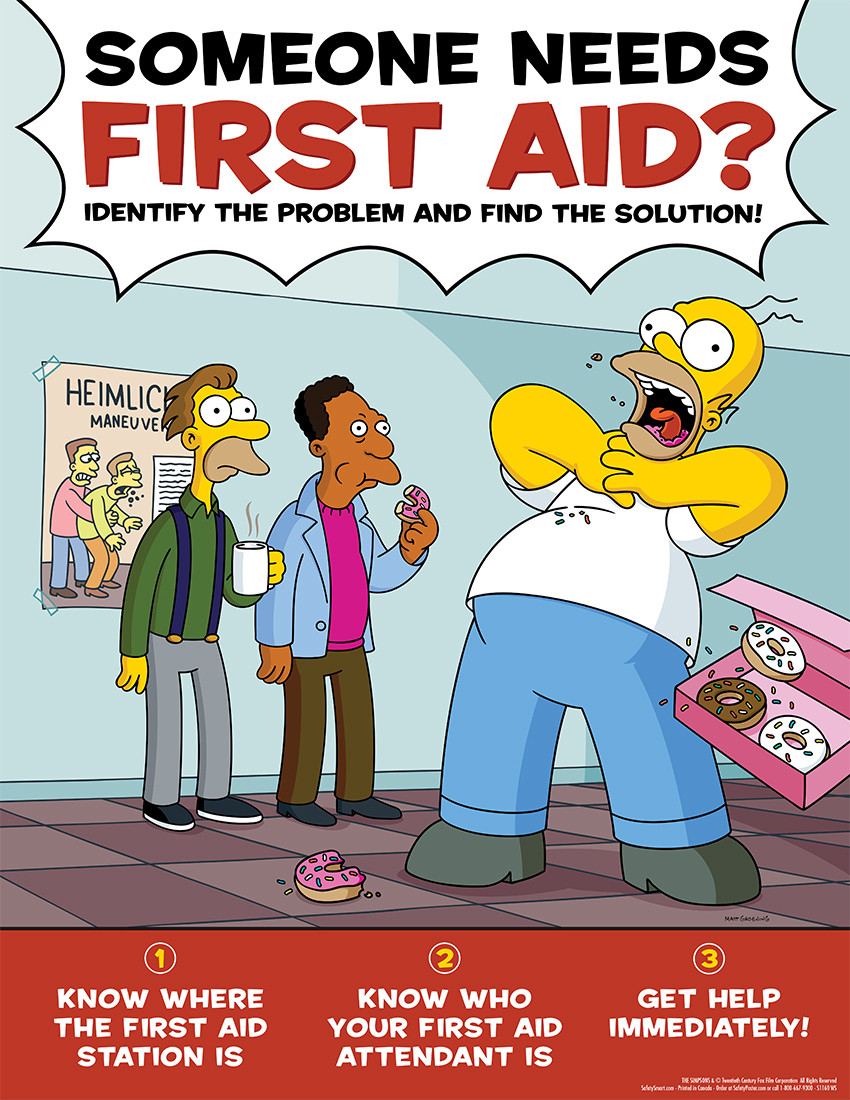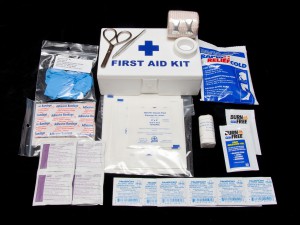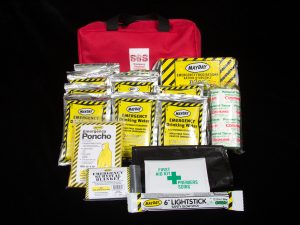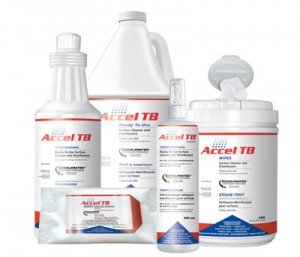
Blog
Our office recently received a phone call from a low-risk office client. As this call came from an office client, in the workplace they rarely deal with first aid calls. However, a few weeks ago an employee experienced a scenario, was white-faced, light-headed and fainted. Then things went sideways. The co-workers who witnessed the episode panicked, did not remember company first aid protocol and in error left the patient alone. Neither co-worker picked up the phone to call the company first aid attendant. Instead, each went looking for the attendant, and as a result, the patient was alone for up to 5 minutes. When the attendant arrived on site with the SOS oxygen unit and first aid kit, he/she directed a staff member to call 911. However, additional time was lost as the first aid room (where the oxygen unit and kit were kept) were in the opposite direction of the first aid scenario. The staff member that was asked to call 911 froze – this occurred two more times. Several more response minutes were lost. Finally, a co-worker responded and left the area to call 911. However, the caller now had “no eyes” on the scenario and was unable to answer questions that the 911 operator was asking. In addition, the employee on the phone with 911 did not know or couldn’t remember the address of the building.
After de-briefing the client, I reassured them that the response from staff was not uncommon and there were a three simple things that could be put in place in the workplace to improve the response to future first aid scenarios.
- Once a month practice first aid scenarios with staff. Ex. simply have a co-worker lie on the floor and have other staff members practicing calling the first aid attendant and 911. Walk through the steps on a regular basis so the responses become second nature
- In addition to having a SOS oxygen unit in the first aid room, it is beneficial for the first aid attendant to have one and a first aid kit as his/her desk, so that they have the required equipment to respond quickly
- Label each phone in the workplace with at minimum the address and phone number of the workplace; if there is more room list the workplace first aid protocol

Blog
Although we originally posted this blog in 2014, we thought it was prudent to re-post in light of the earthquake near Christmas 2015.
Each year it seems we all rotate the same resolutions in order to achieve a longer life: eat healthier, exercise more or quit a bad habit. All of these changes are controllable throughout the whole year, but what about unexpected events that can threaten your life? Unfortunately many people don’t think about emergency preparedness until they hear about a disaster that has happened somewhere else.
What if the disaster hits closer to home? Are you and your family prepared? Do you have an emergency plan?
Instead of recycling those usual and tired resolutions, this year make a resolution for you and your family to be safe. To help you out we at SOS Emergency Response Technologies have come up with 3 quick and easy steps to achieve this goal, so you can sit back and boast to your friends that you accomplished your resolutions for the year.
Step one – Check the batteries in your smoke detector.
Step two – Check your first aid kits. Take a look and see if any products are expired and need to be replaced. If you don’t have a first aid kit we recommend our General Purpose First Aid Kit FK1021 $14.95.

Step three – Check your emergency preparedness kit and update your emergency plan/contacts if needed. If you use bottles of water they have to be replaced yearly. Emergency Food Ration Bars and Emergency Sterile Water Packets last longer (5 years). Double check your contact lists to make sure it is up to date with current information and remind your family about the emergency plan you put in place. If you don’t have an emergency plan there are many sources on the internet. These days we find ourselves working and running errands at all hours of the day so the chances of your family being split up when a disaster hits are larger. Make sure you set a meeting point.
If you don’t have an emergency preparedness kit SOS Emergency Response Technologies has a variety of options to choose from. We have kits for 1, 2 and 4 person families and have economical versions as well.

That’s all there is to it! Although, there are a few extra steps you could take to make sure those around you are safe as well. Ask the human resources team if your workplace has an emergency plan as well as emergency kits. If you are on the safety committee make a point to bring it up at the next meeting and set up an emergency plan for your work place. SOS Emergency Response Technologies can also provide emergency preparedness kits and products for your workplace.
Blog
Would you know what to expect? Would you know what to do? According to the Vancouver Sun, if a catastrophic earthquake (7.3 or higher) hit
- 10,000 dead across Metro Vancouver,
- 128,000 serious injuries
- 30% of Vancouver buildings would be extensively damaged
With Shakeout BC www.shakeoutbc.ca 10 days away this is a good time to review your family emergency plans & check emergency supplies on hand. Don’t be caught in an emergency situation unprepared. The power failure that hit Vancouver in the summer is a perfect example of how preparation and planning can save you and your family from unnecessary stress and difficulties. For as little as $140 – a family of 4 can be full prepared for any emergency for 72 hours. We even have kits for the car.

1 person 72 hour economy kit
Blog
Same-level slips, trips, and falls are occupational hazards that can be found in almost every type of work setting. When considering workplace falls, most people immediately think of falls from a height, yet, according to the Bureau of Labor Statistics (BLS), the majority of fall-related injuries occur as a result of falls from same-level walking surfaces.
Safety professionals today believe that human factors play a key role in these incidents.
Falls to same level:
-
Floors, platforms and stairways may be slippery from water, blood, or poultry fat and grease.
-
Employees may trip over boxes, electrical cords, equipment, or other items that are left in aisles and walkways.
-
Floors may be uneven or have depressions or shallow holes or uncovered floor drains that cause employees to trip.

Blog
Jackie Kloosterboer has been teaching people how to prepare for earthquakes for close to 2 decades. She is the author of My Earthquake Preparedness Guide – Simple Steps to get You, Your Family and Pets Prepared. Follow Jackie on Twitter @Surviving_it to receive Earthquake Preparedness tips to help develop your Family’s Earthquake Plan.
| Nepal – Could we be next?The devastating Nepal earthquake claimed the lives of so many innocent men, women and children, injured thousands, devastated people’s livelihoods and then less than a month later another earthquake – absolutely unbelievable! What terrifies me is – like Nepal we too are overdue for an earthquake and so few of us are prepared. I can only imagine what it would be like on the West Coast in the aftermath of 2 major earthquakes. We need to look at Nepal as yet another wakeup call and start taking action to get ourselves, our families and pets prepared – we could be next! Look at your own family, how would an earthquake impact them? What if you are not together when it strikes – could they survive without you? What plans do you have to connect after an earthquake? What supplies have you got stored so you can better survive-it? If you are like most people, you have a few supplies tucked away in the back of the hall closet – but do you have enough to sustain you, your family and pets for a minimum of 3 days – a week is even better! The following 3 simple steps is a great place to start to better protect you, your family and pets in an earthquake:
Create your Family Meeting Places Family Meeting Places are pre-identified locations where your family will meet when unable to connect using regular methods of communication. Hopefully we are home together when facing an earthquake, but that may not be the case, we could be at work, they could be at soccer practice – we just don’t know. That is why you need to identify Family Meeting Places so you will have options to connect. The more options you have the better your chances of connecting with your family. Your first Family Meeting Place should be outside your home – if you need to evacuate quickly such as for a house fire this is where you and your family will meet. Across the street is good. If you evacuate through different doors you could be scattered and not know the safety of your family because you can’t locate them. This Family Meeting Place will help you connect much faster and you will know everyone is safe much quicker. Develop a second Family Meeting Places within walking distance of your home. If you must evacuate your home or you are not able to return home your family can meet there. A friend or family member who lives within walking distance works well. Once you have connected with your family you can then determine your next move. For those of you who work close together – identify a Family Meeting Place close to your work. If you cross bridges to get home you may find them closed after an earthquake. If you have a Family Meeting Place near your work you can meet your family who is in the same area and then determine if best to make your way home or stay in your current location. Look at your daily lives and identify if there are other Family Meeting Places you need to identify to help connect your family.
Designate Your Family’s Out of Area Contact When an earthquake strikes there are so many unknowns – will our internet be down, will we be able to text – will our cell phones work – until the earthquake happens we don’t know the answer. What we do know is – the more options you have available to connect with your family the better your chances will be of making that connection. In addition to your Family Meeting Places, an Out of Area contact provides another way for you to connect with your family. We know our home phones and cell phones will likely not be working after a significant earthquake, but often long distance will still work.
Simply identify someone who lives out of the province (preferably east of the Rockies) to be your family’s Out of Area Contact. When faced with an earthquake and cell phones and local phones lines are not working, you and your family members will know to call your Out of Area contact to provide your status and get updates on family members who have already called in.
A word of caution – we all put our contact numbers in our cell phones – but if power is out and you can’t charge your phone you won’t have access to your Out of Area contact number. Make sure you carry your Out of Area’s contact number in your wallet.
Know what to do when the earth starts moving Drop, Cover and Hold On – this must become second nature to all of us. When the earth starts moving we must immediately Drop, Cover and Hold On underneath a heavy table or desk or against an interior wall so we are better protected from falling and shooting objects. Once the shaking stops – slowly count to 60 then cautiously get out of your safe spot and check your surroundings. Check on family members and then identify what your next move will be. The above 3 steps are not difficult for you and your family to do and if this is all you do, you will better survive the earthquake. But don’t stop here – keep going and get those emergency kits and supplies your family will need and make your home and office safe so when the earth starts moving – you, your family and pets will be better protected. Once the earthquake hits it will be too late. You won’t be able to run out and get what you need. The time to do it is now. Remember – your family is counting on you! |
|
Blog
Here comes the season for colds and flu. Most illness can be prevented. Here are some simple things you can do to prevent illness in the workplace or at school.
1. Wash hands often. The CDC says to wash your hands with warm soap and water for at least 20 seconds. Sing Happy Birthday…2x
2. If you come in contact with anyone that is sick, try to avoid touching your eyes, mouth or nose. Germs can get into your easily through these passageway.
3. Help others. If you are sick, call in sick. If you sneeze or cough, cover your sneeze with your elbow and not in your hand. Wash your hands anyway.
4. Disinfect with a disinfectant wipe. Research from the University of Arizona found that phones, desks, fountain handles, microwaves, and computer keyboards contain large amount of germs. Use caution wiping down electronics as they are sensitive to moisture. We carry Accel TB in spray and wipes form.
5. Use hand sanitizer! The CDC says to use alcohol based hand sanitizer. We carry Purell for dispensing machines and/or Isagel in personal size, desktop or 4L jugs.








